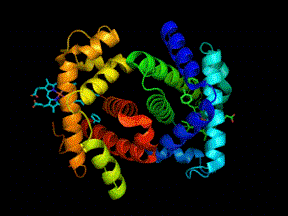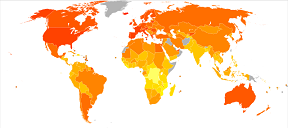Proteins are essential to feeding the world. Malnutrition from protein shortage is widespread; ca. 10% of the global population suffers from it. Whereas the world produces more than enough proteins for everyone. But they are unevenly distributed. What can we do to feed the world better?

In the book Our future proteins, A diversity of perspectives, a team of Wageningen University and Free University Amsterdam poses itself these questions. The editors are Stacy Pyett, Wendy Jenkins, Barbara van Mierlo, Luisa M. Trindade, David Welch and Hannah van Zanten. In their Introduction, they explain the importance of proteins: ‘We focus on proteins because proteins are both an essential macronutrient and protein-rich foods are the major contributor to the environmental burdens of food production. Considering current food production and consumption through the lens of protein brings the global challenges of the total food system into sharp focus’ (p.14).
Protein is the central problem
There is a pressing need, so the authors say, for addressing the food system and more in particular, protein production: ‘Our current global reliance on food systems that are clearly not within planetary boundaries means we are essentially accelerating full throttle toward a global food crisis and to depletion of our natural resources’ (p.14). Can we transition out of this perspective fast enough? First of all, we should limit quickly the planetary impact of food production and consumption. They relate this to many impacts of agriculture: GHG and methane emissions, land and water use, soil quality maintenance, fertiliser usage and biodiversity. And climate is changing fast, so we need to prepare for extreme weather events. There are isolated efforts to cope with this, like the development of drought- or salt-tolerant staple crops, but we need to be aware of the dangers and step up efforts.
As a matter of fact, the world does produce more than enough proteins. But across the globe, incomes are unevenly distributed, and so are diets. Also in developed countries, notably the USA. Poverty often causes a shortage of proteins in the diet. On the other side of the spectrum, we have a growing problem of obesity as a result of overconsumption – often of unhealthy foods.

Carnivores or vegetarians
A pressing problem in the protein transition is whether or not we should hold on to meat as an ingredient of our diets. The authors choose a pragmatic answer, accepting that animal production systems will be around for the foreseeable future. Consequently, they accept ‘a portfolio of options that address varied needs for varied geographies and market segments.’
Present debates on our future food system circle around three domains, the authors continue. First of all, the discussion between vegetarians and proponents of meat as part of a healthy diet. A completely vegetal diet could fulfil all our dietary needs, if carefully executed. Therefore, the authors judge this to be a societal and ethical, rather than a scientific issue. Then there are technical options, particularly meat production in reactors, without killing animals. Will such a scheme arrive early enough for the world to transition to it? The authors doubt it – costs are high and capacity is low, as yet. Finally, there is the question if production changes or consumption changes will drive the transition.
Innovative diets
The authors end with five lines that together delineate the ‘path forward’. First of all, we need to develop good and innovative plant-based diets for high-income countries. Diets that are attractive to customers. Secondly, particularly in the area of proteins, the world needs a more equitable approach. This asks for a greater diversity in protein sources and technologies (old and new, high- and low-tech). Thirdly, we will have to find a sustainable role for livestock; with greater attention for animal welfare, emissions and labour conditions for farmers. Then, the food sector should become interesting for investors – an important driving force for overcoming bottlenecks. And finally, we should never forget that there are many potential directions for solutions. In different contexts, people will have different needs, giving rise to different approaches.
The Introduction ends with a plea for social and transdisciplinary research. In a field dominated so much by human behaviour, we need to identify the real questions that motivate people.
Interesting? Then also read:
Efficient protein production and utilization
How to cover future protein demand?
The microbial food revolution
